- El Caruso
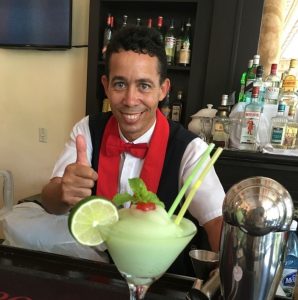 Read more
Read moreWhen famous Italian opera star Enrico Caruso visited Havana’s luxurious Hotel Sevilla, built in 1908, bartenders created a Caribbean spearmint-laden drink in his honor called El Caruso. One part gin, one part dry vermouth, one-half part crème de mint, and ...
- Santería for sale
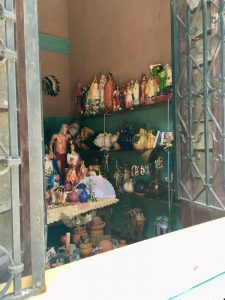 Read more
Read moreIn Matanzas, a longstanding cradle of Black pride and cultural tradition, this display of orishas who take the form of Catholic saints, historical figures, and even racialized icons form part of a privately owned ‘store’ selling goods out of a ...
- Swan blankets in July
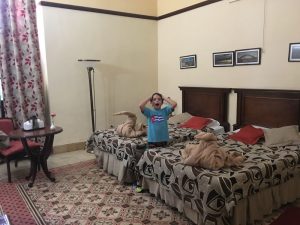 Read more
Read moreMost visitors to Caribbean hotels can attest to the (apparently) region-wide requirement that rooms come fully stocked with bath towels formed into the shape of swans. Less common, especially at the height of Cuba’s sweltering summer heat, are wool blankets ...
- Modern housing and horse-drawn carriages
 Read more
Read moreThe outskirts of Matanzas City feature large, government housing projects originally built in the 1960s and 1970s, often based on the latest Eastern European or Russian designs. First-time residents included former slum dwellers and peasants whose small plots were collectivized, ...
- Icons of Matanzas
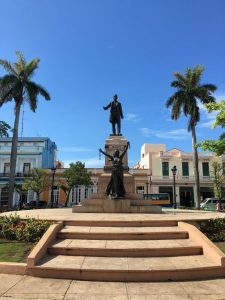 Read more
Read moreThese two monuments date from two very different post-revolutionary eras, but they are equally identified with Matanzas, a province whose name literally commemorates its decimated native populations’ experience with Spanish colonialism: massacre. The early twentieth-century statue of José Martí, flanked ...
- Port of Santiago de Cuba
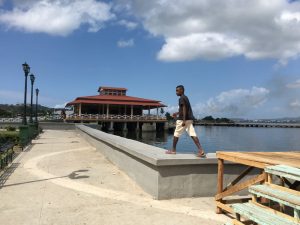 Read more
Read moreAlthough Santiago is Cuba’s second-largest city, few foreigners venture because flights are few and unreliable while driving east from Havana requires taking Cuba’s 1920s-era national highway, a two-lane and often twelve-hour commitment. Yet the visual landscapes of the region are ...
- Living Room
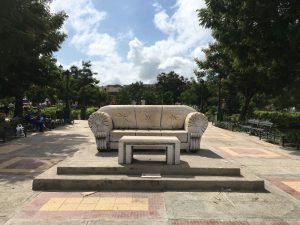 Read more
Read moreSculpted from marble and designed by artist José Miguel Díaz, Living Room, deliberately titled in English rather than Spanish, evokes the Cuban collective custom of spending most nights sitting in public spaces rather than ensconced in one’s home. Much as ...
- The Sunset in Cuba
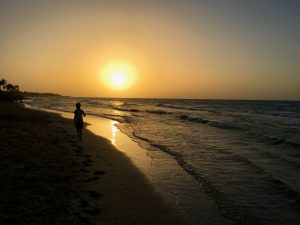 Read more
Read moreThese portraits were taken just minutes apart in mid-July at Santa María, just outside Havana. There might be nothing as beautiful as a developing sunset on a deserted Cuban beach. (July 2016)
- “A Place where everything CANT happens”
 Read more
Read moreWhen visiting Havana’s once-premier nightclub “Jazz Café” in the early 2000s, one wondered whether the typo in the Jazz Café’s paper placemats was intentional or not. Correctly translated, the slogan “Un lugar donde todo puede suceder” should have read “A ...
- History belongs to the teller
 Read more
Read moreIn the first ten years after Fidel Castro fell ill in 2006 and passed his command over Cuba to his brother Raúl Castro, publicly displayed signs like this—announcing a gallery show by artist Duvier del Dago—were as irreverent as they ...
- Gratitude, not power
 Read more
Read moreIn the lead-up to what many watchful Cubans predicted would be the announcement of the death of 90-year-old Fidel Castro, the title of a summer 2016 exhibit at the Museum of the Revolution (in Cuba’s former Presidential Palace) succinctly reminded ...
- PIGS IN PRISON?
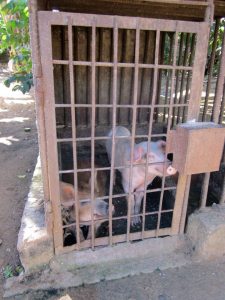 Read more
Read morePerhaps one of the most common characteristics of life in Cuba under Communist Party rule might be its surreal quality. Until recently, when access to the internet dramatically changed citizens’ ability to judge truth from rumor (or fiction), the Cuban ...
- Weaponizing Unanimity
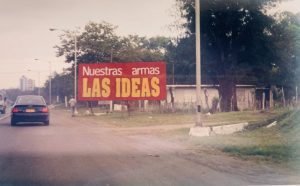 Read more
Read moreIn the Special Period, most government propaganda signs seemed hypocritical because they insisted that Cuba had not adopted capitalism, that it was not experiencing an ideological crisis, and that it would never partner with foreign corporate capital to ensure the ...
- Fisherman on Havana’s Malecón
 Read more
Read moreWhile most fishermen say standing on the rocks below Havana’s sea wall at low tide is a more effective method for catching something to eat, this lone fisherman seemed content simply to try his luck from the wall itself. ...
- “Artisanal” open-air touring bus
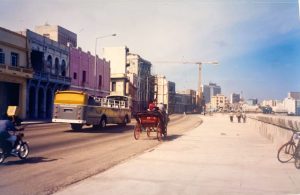 Read more
Read moreMade from a decommissioned shuttle that had once been used to take workers to a local factory in Soviet times, this open-air touring bus—whose roof was simply carved off—filled in to meet the normal requirements of the tourist industry. Not ...
- One-room rural schools
 Read more
Read moreTogether with the once revered Soviet-funded healthcare system, the greatest victim of the Cuban government’s new budgetary priorities after adopting state capitalism in 1992 has been education. Schools in rural communities may have suffered less simply because the human investment ...
- Cuba’s Gone with the Wind fashion sense
 Read more
Read moreHow can we explain the apparent return of 1950s Scarlett O’Hara ball gowns to Communist-ruled “socialist” Cuba in the early 2000s? For more than a decade, this was a top choice of fifteen-year-old girls in Havana with means. Posing girls ...
- Private Sanctuaries
 Read more
Read moreA common external feature of many homes in Cuban cities is the use of bricks, cement, and chain link fences to literally wall off intruding eyes and not simply discourage potential thieves. To foreign eyes, these efforts inexplicably destroy the ...
- Pay a Dollar, Ride a Bull
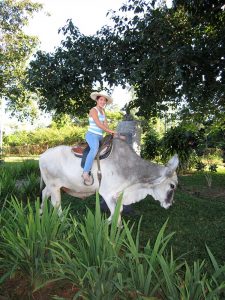 Read more
Read moreThis lovely beast is a living relic of Fidel Castro’s legendary quest to cross-breed Cuban cattle with Indian Cebu cows in the 1960s and 1970s. After nationalizing most dairy cows and confiscating the medium-size farms that produced milk and cheese ...
- Cuban Baptism
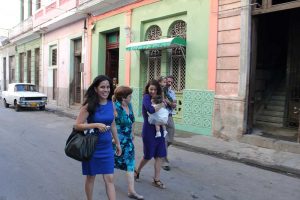 Read more
Read moreAfter decades of enforcing conformity to the ideals of atheism, the Cuban Communist Party decided to adopt secularity and allow, for the first time, even its own members to openly practice a religion. Because most Cubans had no knowledge of ...
- “Socialism is the only guarantee of being free and independent”
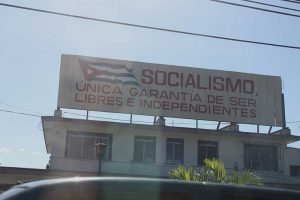 Read more
Read moreHowever, we might dispute the social gains that the Cuban government claimed its version of socialism achieved in its Soviet-sponsored age (1961-1991), today’s version of Cuban socialism is a far cry from guaranteeing anything. Schools not only continued to hemorrhage ...
- Fragile signs of fidelity
 Read more
Read moreA bulletin board in the doorway of this Committee for the Defense of the Revolution serves as a metaphor for the scorn with which most citizens regarded their local neighborhood surveillance units by the early 2000s. Hand-made “Post-Its”, all ...
- Sabrina’s “Spanish Dance” Class
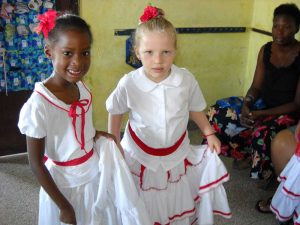 Read more
Read moreBefore her father–an engineer and contract worker—found his way from Namibia to Spain and reclaimed his family, my goddaughter Sabrina attended a model government school in the Havana neighborhood of San Miguel de Padrón. Because the government often used the ...
- Downtown Pinar del Rio at dusk
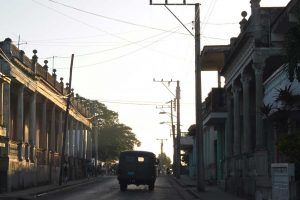 Read more
Read moreThe glow of a Cuban sunset illuminates the elaborate columned buildings lining the city of Pinar del Rio’s main street. Just getting off work, dozens of Cubans line up on both sides of the road, awaiting transportation—mostly on flat-bed trucks ...
- Family reunion
 Read more
Read moreWhen I returned to Cuba after a two-year hiatus in visits in 2011, my closest relatives like Tío Tiki confessed to having prepared themselves emotionally to never seeing me again. I had been the first person in my family to ...
- CARLOS III MARKET, A RELIC OF THE BATISTA ERA
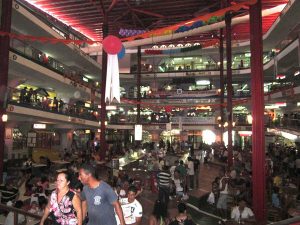 Read more
Read moreFunded through government loans approved by the dictator Fulgencio Batista for his friends and cronies in the mid-1950s, the “Carlos III Market” represented the epitome of modernity. From the series, “La Lucha ”: Citizen Resistance, Government Recalcitrance ...
- TRIUMPH OF THE MIDDLEMEN
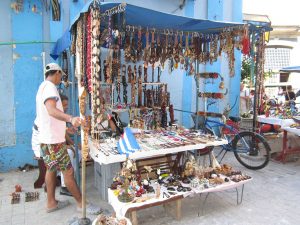 Read more
Read moreAs documented in our first Fotodiario on the Special Period, artisans in Cuba were once relegated to selling their wares by hanging them from the handle bars of their bikes and riding past tourists on the beach in the hopes ...
- RAÚL CASTRO’S SHOOTING RANGES
 Read more
Read moreFew Cubans who experienced the first five years of the Cuban Revolution and Fidel Castro’s rule would forget the preponderance of guns. Uniformed and ununiformed revolutionaries exhibited waists strapped with pistols. Anti-aerial weapons stood guard alongside the Malecón. Everywhere young ...
- ICE FOR SALE—IN CUBA!
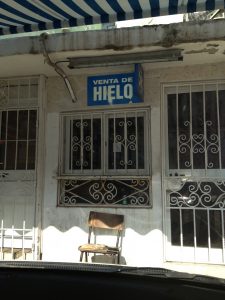 Read more
Read moreNeedless to say, trying to maintain an ice-making and ice-selling business was unthinkable during the Special Period when electricity was as hard to come by as fresh fruit and nutritious, varied food. Perhaps one of the greatest barometers of economic ...
- Bacardí Corporation’s unmistakable bat:
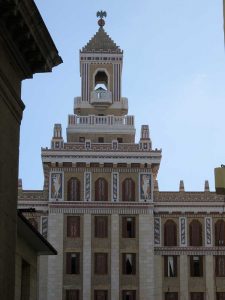 Read more
Read moreTopping this building’s magnificent art deco turret is a bat, the symbol of the Bacardí family and Cuba’s oldest rum-making company, now headquartered in Puerto Rico. Built in the early 1930s, the twelve-story skyscraper symbolized an apex in the architectural ...